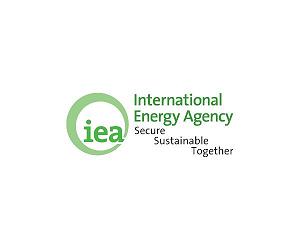Efficient and environmentally friendly solar cells are required for a transition to a fossil-free energy supply. Researchers at Linkoping University have mapped how energy flows in organic solar cells, something that previously had been unknown. The results, which can contribute to more efficient solar cells, are published in Nature Communications.
“To enable the full potential of organic solar cells to be exploited, there is a need for a clear picture of how they work. We have now obtained that picture. This provides a better understanding of how to create new efficient and sustainable solar cell materials,” says Mats Fahlman, a professor at the Laboratory of Organic Electronics at Linkoping University.
Today, solar energy meets around two percent of the world’s energy needs. But its potential is far in excess of that. The energy contained in the sun’s rays is more than enough to meet our needs today and in the future. Solar cells that are cheap and environmentally friendly to manufacture are needed to be successful. In addition, they need to be efficient at absorbing a large proportion of the sun’s rays and converting to electrical energy.
Organic solar cells based on organic semiconductors are increasingly emerging as a sustainable option. But until just a few years ago they could not stand comparison with traditional silicon-based solar cells for efficiency. This was due to energy loss in charge separation, which was thought to be unavoidable.
But in 2016, a research team at Linkoping University together with colleagues in Hong Kong were able to show that it was possible to avoid the energy loss using different donor-acceptor materials that help the electron to escape from its hole more easily. Energy loss then decreased and efficiency increased. The problem was that no one knew exactly how it happened. It was possible to see that it worked, but not why.
Some of the same research team at Linkoping University have now solved the mystery that had led to disagreement in this field of research. In a new study published in Nature Communications, the researchers have identified what energy levels are required to minimise energy losses.
“To find out how the energy flows, we laid nanometre-thick organic semiconduction films in several layers one on top of the other, rather like a strawberry and cream cake. After that we measured the energy required to separate the electrons from their holes in each individual layer,” says Xian’e Li, a PhD student at Linkoping University and principal author of the scientific article.
The researchers were then able to map the mechanism behind the energy-efficient charge separation. This systematic mapping points a new way forward for the development of organic solar cells.
The study is funded by the Swedish Research Council, the Swedish Energy Agency and the Swedish Government’s strategic initiative Advanced Functional Materials at Linkoping University.
Footnote: The organic solar cells in the study are of a type where the electron acceptor is made of a material other than fullerene (a form of carbon), which previously was the most common material used. Non-fullerene-based organic cells become more stable and are capable of absorbing a greater proportion of the sun’s rays for conversion to energy.
Research Report:Mapping the energy level alignment at donor/acceptor interfaces in non-fullerene organic solar cells
Related Links
Linkoping University
All About Solar Energy at SolarDaily.com
|
We need your help. The SpaceDaily news network continues to grow but revenues have never been harder to maintain. With the rise of Ad Blockers, and Facebook – our traditional revenue sources via quality network advertising continues to decline. And unlike so many other news sites, we don’t have a paywall – with those annoying usernames and passwords. Our news coverage takes time and effort to publish 365 days a year. If you find our news sites informative and useful then please consider becoming a regular supporter or for now make a one off contribution. |
||
|
SpaceDaily Contributor $5 Billed Once credit card or paypal |
SpaceDaily Monthly Supporter $5 Billed Monthly paypal only |
|

![]()
Renewable energy to grow to new record in 2022: IEA
Paris (AFP) May 11, 2022
The world will set a new record for renewable power capacity this year led by solar energy in China and Europe, but growth could lose steam in 2023, the International Energy Agency said Wednesday.
A record 295 gigawatts of new renewable power capacity was added in 2021 despite supply chain bottlenecks, construction delays and high prices of raw materials, the IEA said in a report.
An additional 320 gigawatts is expected to be installed this year, equivalent to the entire electricity demand of Ge … read more
